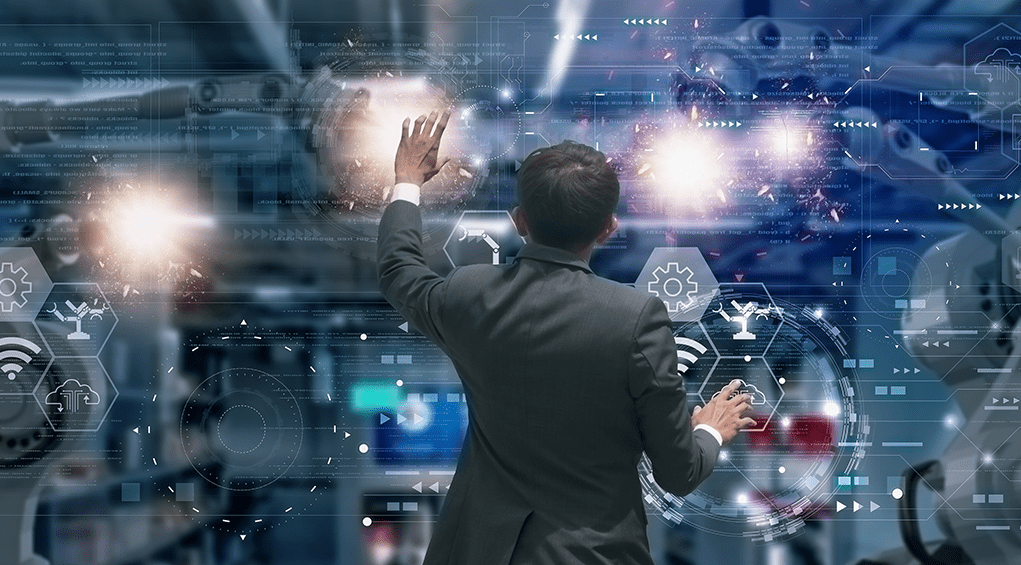Our global workforce has undergone significant transformations and is continuing to change at an unprecedented pace. This shift is largely driven by technological advancements and changing economic landscapes, setting the stage for a new era of productivity in the future of work. The integration of generative AI (Gen AI) and performance monitoring tools have played a significant role in the surge, promising to revolutionize how businesses operate and achieve growth.
Generative AI: From Potential to Productivity
According to Philip Powell, an IU economist, we are on the cusp of a prosperity supercycle fueled by the largest surge in corporate productivity since the 1990s. Powell argues that this productivity boom is not merely a phase but a sustained period of growth that organizations must prepare for. “If your mindset is not in a prosperity mindset,” according to Powell, “if you’re not planning for 2, 3, 4 years of a nice growth like we had between 2016 and 2020, like we had between 2003 and 2007, then you’re really doing a disservice to your stockholders. That’s your biggest risk.” He also emphasizes that CEOs should focus on increasing productivity through a holistic approach, rather than simply cutting costs. This includes investing in innovative technology, management practices, infrastructure, and talent development.
Generative AI is already playing a pivotal role in transforming business operations. Companies that have adopted Gen AI are beginning to see tangible benefits, with some attributing over 10% of their earnings before interest and taxes (EBIT) to the technology according to data acquired by McKinsey & Company. However, scaling these solutions across organizations remains a challenge. The key to success lies in creating an operational strategy that prioritizes use cases with long-term value and integrates Gen AI with human capabilities. For instance, in the finance sector, Gen AI agents are being used to draft credit-risk memos, significantly increasing revenue per relationship manager by 20%.
Yet, despite the promising outlook, many companies struggle with implementing AI effectively. A 2023 survey revealed that only 31% of employees feel engaged and energized at work, which highlights the broader issue of employee disengagement that AI alone cannot solve. The future of work will require companies to not only adopt innovative technologies but also focus on reengaging their workforce, ensuring that AI tools are complementing human effort rather than replacing it.
Related Read: Harnessing AI: Lessons from the C-Suite
Overcoming Implementation Challenges
While 75% of global knowledge workers have started using Gen AI, a large portion has not received adequate training, causing inconsistent productivity gains. Additionally, 60% of business leaders express concerns about their “lack of a clear vision” for AI implementation and how to measure its impact on productivity.
This gap reiterates the need for a robust strategy that not only incorporates AI tools but also addresses the human element of change management. Organizations must invest in upskilling their workforce, fostering a culture of continuous innovation, and ensuring that AI tools are seamlessly integrated into existing workflows. As seen in some early adoptees, companies that focus on building the required governance and performance infrastructure are more likely to achieve sustained productivity gains from their Gen AI investments.
The Future of Work: A Strategic Approach
As we move further into this productivity boom, C-suite executives must take proactive steps to ensure their organizations are not left behind. This includes:
- Investing in Technology: Companies should prioritize the adoption of state-of-the-art AI tools that can automate routine tasks and enhance decision-making processes. Powell advises that CEOs invest in technology and automation to a point that may initially feel uncomfortable but will pay off in the long run.
- Focusing on Talent Development: Building talent pipelines and creating a culture of continuous learning will be critical as AI continues to change job roles. This involves modernizing management approaches to accommodate the expectations of a younger workforce, particularly Gen Z, who demand hybrid work environments, impactful careers, and a focus on diversity and inclusion.
- Enhancing Performance Monitoring: The future of work will see a greater reliance on performance monitoring tools that provide real-time insights into productivity levels. These tools will help identify areas for improvement and set benchmarks for AI integration and organizational performance. The trend towards using such tools is driven by the need to maintain competitive advantage while managing the challenges introduced by AI.
- Adopting a Long-Term Vision: Companies must move beyond short-term gains and focus on how AI and productivity tools can transform their operations over the next few years. This involves continuous reassessment of AI strategies and being open to new opportunities as the technology evolves.
The future of work is intertwined with advancements in AI and performance monitoring tools, there’s no getting around it. For C-suite leaders, challenges lie in adopting these technologies but doing so in a way that maximizes their potential and prepares for sustained organizational growth. By taking a strategic human-centric approach, companies can join the productivity boom, positioning themselves for long-term success in the new era.
Resources: Chief Executive, The New Productivity Boom Is Here: Is Your Company Ready? Are You?, Sifted, Future of work & productivity (2024) McKinsey & Company, From promising to productive: Real results from Gen AI in services





